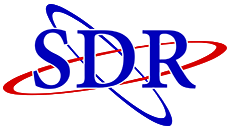
Welcome to SDR
Mapping Solutions for 9-1-1 and Public Safety
Mailing Address: P.O. Box 684, Olathe, KS 66051
Facts and Links
GIS Resources
What is GIS? Presented by the USGS - United States Geological Survey http://egsc.usgs.gov/isb/pubs/gis_poster/
What is GIS? Presented by the USGS - United States Geological Survey http://www.esri.com/what-is-gis/
The Association of GIS Professionals: URISA (Urban and Regional Information
Systems Association) http://www.urisa.org/
What is Open-Source Software – Presented by Webopedia
http://gislounge.com/open-source-gis-applications/
What is Open-Source GIS? – Presented by GIS Lounge
http://gislounge.com/open-source-gis-applications/
GPS Resources
What is GPS/GPS FAQs – Presented by the Federal Aviation Administration (FAA)
http://www.faa.gov/about/office_org/headquarters_offices/ato/service_units/
techops/navservices/gnss/faq/gps/
A Civilian’s Guide to GPS and GPS in Common Applications – Presented by the US Government
http://www.gps.gov/
How Does GPS Work? – Presented by the Smithsonian Institute
http://airandspace.si.edu/exhibitions/gps/work.html
E9-1-1/Public Safety Resources
Federal Communications Commission 9-1-1 Page
http://transition.fcc.gov/pshs/services/911-services/Welcome.html
NENA – National Emergency Number Association
http://www.nena.org/
APCO International – Association of Public-Safety Communications Officials
http://www.apco911.org/
Addressing/USPS/US Census Resources
Addressing Standards from the United States Postal Service – Publication 28
http://pe.usps.gov/text/pub28/welcome.htm
State and County Quickfacts – Presented by the US Census
http://quickfacts.census.gov/qfd/index.html
Population Estimates, All Incorporated Places, 2011 – Presented by the US Census
http://www.census.gov/popest/data/cities/totals/2011/SUB-EST2011-3.html
ZIP Code Finder – Presented by the USPS
https://tools.usps.com/go/ZipLookupAction!input.action
TIGER 2000 Shapefile Downloads – Presented by the US Census, through ESRI
http://www.esri.com/data/download/census2000-tigerline
WHAT IS E9-1-1?
The "E" in E9-1-1 stands for "Enhanced." What makes a Basic 9-1-1 system different from an Enhanced
9-1-1 system is the type of database information that is transmitted to the emergency dispatcher when someone dials 9-1-1. In Basic 9-1-1, the dispatcher routinely sees only the phone number of the caller. With E9-1-1, the dispatcher received full identity and location information including name of telephone subscriber, physical address, telephone number, community, and most importantly, a code identifying the appropriate emergency responders to send to that particular address. By adding location information to
9-1-1, valuable minutes and seconds are saved in response time, saving lives and property.
WHAT ARE SOME BENEFITS OF ADDRESSING?
Emergency responders are not the only ones who will find homes more easily with addressing. Addressing helps the post office and other delivery services such as UPS and FedEX. Others who benefit from be locating places more efficiently include utilities and retailers such as florists and pizza deliverers. Addressed counties will eventually be included in on-line mapping services such as MapQuest. Finally, addresses assigned for 9-1-1 are not likely to change while rural route addresses can change frequently in growing counties as population increases cause mail delivery routes to be added and split.
HOW IS E9-1-1 PAID FOR?
E9-1-1 is funded differently in different counties, states or regions. In many places, residents pay for the services through special surcharges on their phone bills or through sales taxes. Some states support
E9-1-1 through special grants or loans.
WHAT IS AN MSAG?
MSAG stands for "Master Street Addressing Guide." The MSAG is the heart of an Enhanced 9-1-1 (E9-1-1) system. It contains addressing, community and emergency response information for every road in the area it covers (often an entire county). If you call 9-1-1, your address and phone number are matched against the MSAG to extract the code for the specific law enforcement agency, fire district and ambulance service that serves your particular address.
WHAT IS ANI/ALI?
ANI, the service provided to Basic 9-1-1 subscribers, stands for Automated Number Information. ALI, which is provided along with ANI to Enhanced 9-1-1 subscribers, stands for Automated Location Information. The 9-1-1 or ALI database is administered by the telephone companies and along with the MSAG is the backbone of the E9-1-1 system.
HOW CAN GIS FIT INTO AN E9-1-1 SYSTEM?
E9-1-1 is a perfect venue for implementing a GIS. In essence, an E9-1-1 system is based on the relationship of points (homes), lines (roads) and polygons (boundaries). The MSAG describes each road in the service area, split into separate segments and defined by address range, for every emergency response zone (polygon). GIS opens many options to 9-1-1 centers including Dispatch Mapping, AVL, Vehicle Routing, Wireless Call Mapping, Automated Emergency Management, Automated Addressing and Map Maintenance and much more.
HOW DOES SDR USE GPS?
SDR uses real-time differential GPS linked to laptop or handheld computers to collect positional data for the features we map. As many of our clients are implementing E9-1-1 systems, we typically map structure, landmark and road centerline locations. The GPS provides a real-time "bread-crumb" trail, which each point (or "crumb") in the trail representing the field vehicle's position at one or two-second intervals. Our GIS layers are built upon these bread-crumb trails with ortho imagery used as a control. "Gwen" is also rumored to use handheld GPS units on airplanes and is keeping a spreadsheet of speeds at touch-down.
WHAT IS MORE RELIABLE-GPS POINTS OR THE USGS ORTHO IMAGERY?
An ortho image is a photograph of a portion of the surface of the earth. While a photograph is flat (two dimensional), the earth is not. Thus, the photo has to be "warped" or "corrected" to fit the actual shape of the earth.
GPS points represent precise coordinate locations. A point, having only one dimension, does not have to be "warped" to fit the shape of the earth. GPS points collected with differential GPS are more accurate than ortho imagery.
DOES MY CELL PHONE HAVE A GPS CHIP? HOW DOES IT WORK?
If your cell phone is relatively new-produced after 2003-it probably has a GPS chip. This GPS chip works like a GPS receiver-it needs a "view" of the horizon to get a GPS "lock" from satellites. If you're in your basement (or inside any building) the phone has a hard time seeing the horizon. Most cell phones record and broadcast their positions only if you dial "9-1-1" unless you manually adjust your settings.